Abstract
The ratio of maximum rate of renal tubular reabsorption of phosphate to glomerular filtration rate (TmPO4/GFR) was determined in 546 schoolchildren, aged between 6 and 17.9 years, using the nomogram of Walton and Bijvoet.1 TmPO4/GFR correlated with chronological age in girls and boys and in each remained significantly higher than in adults. TmPO4/GFR in the children correlated neither with fasting serum immunoreactive calcitonin and parathyroid hormone levels nor with the urinary cyclic AMP excretion. The study showed a parallel decrease in TmPO4/GFR, excretion of total hydroxyproline and serum alkaline phosphatase activities after puberty, with a significant relationship of both these indices of bone turnover to TmPO4/GFR values. This indicates that the high renal phosphate threshold of children may be an important factor for bone mineralisation by providing high extracellular inorganic phosphate concentrations during normal growth.
Full text
PDF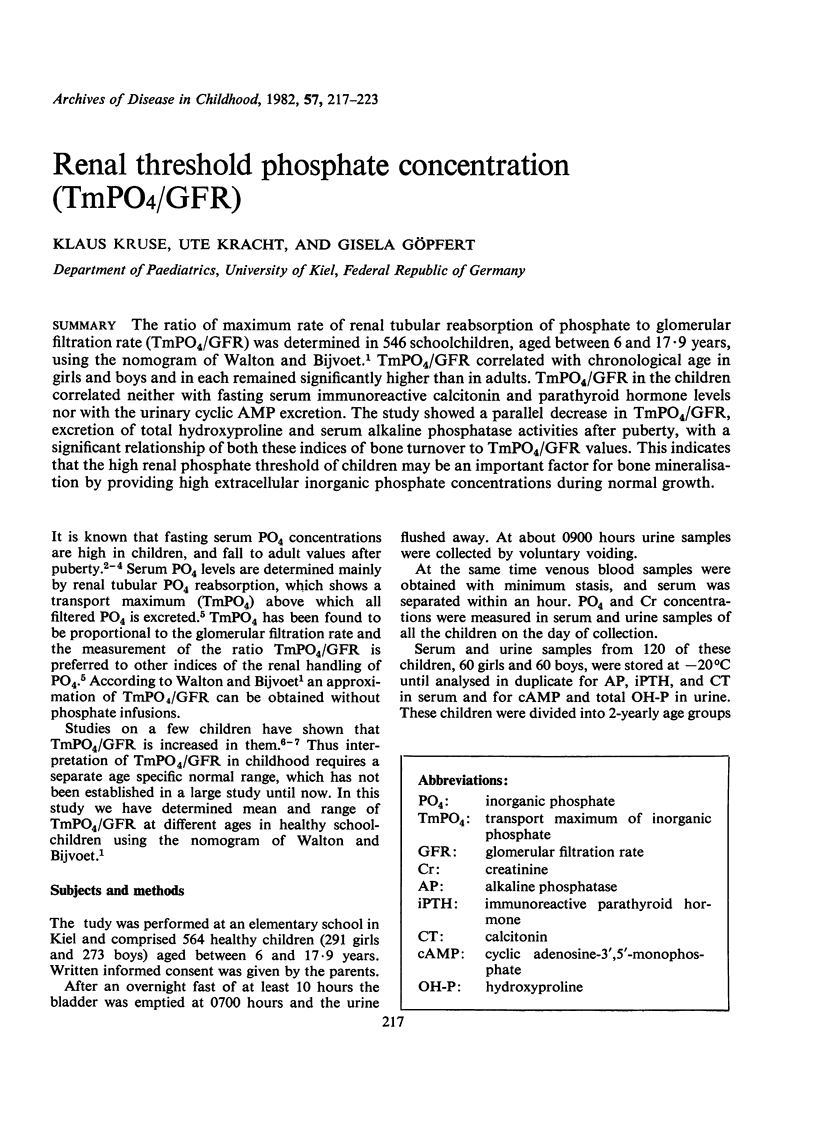
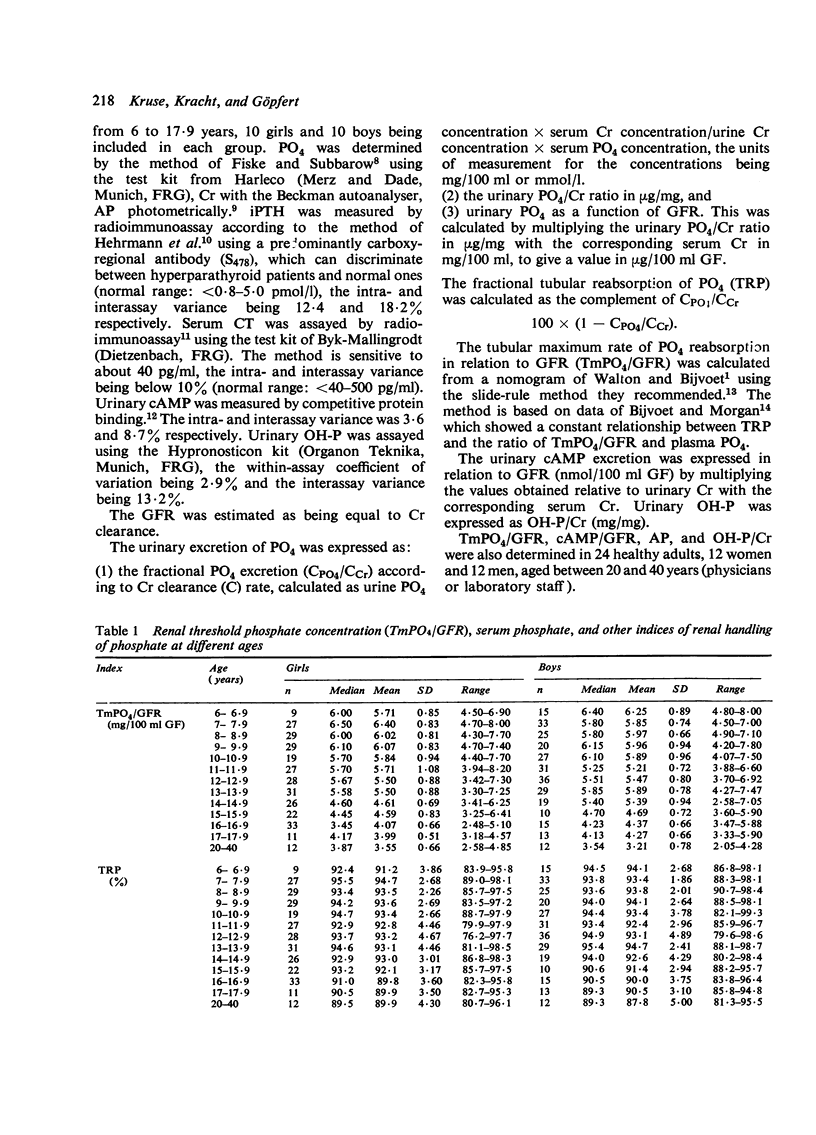
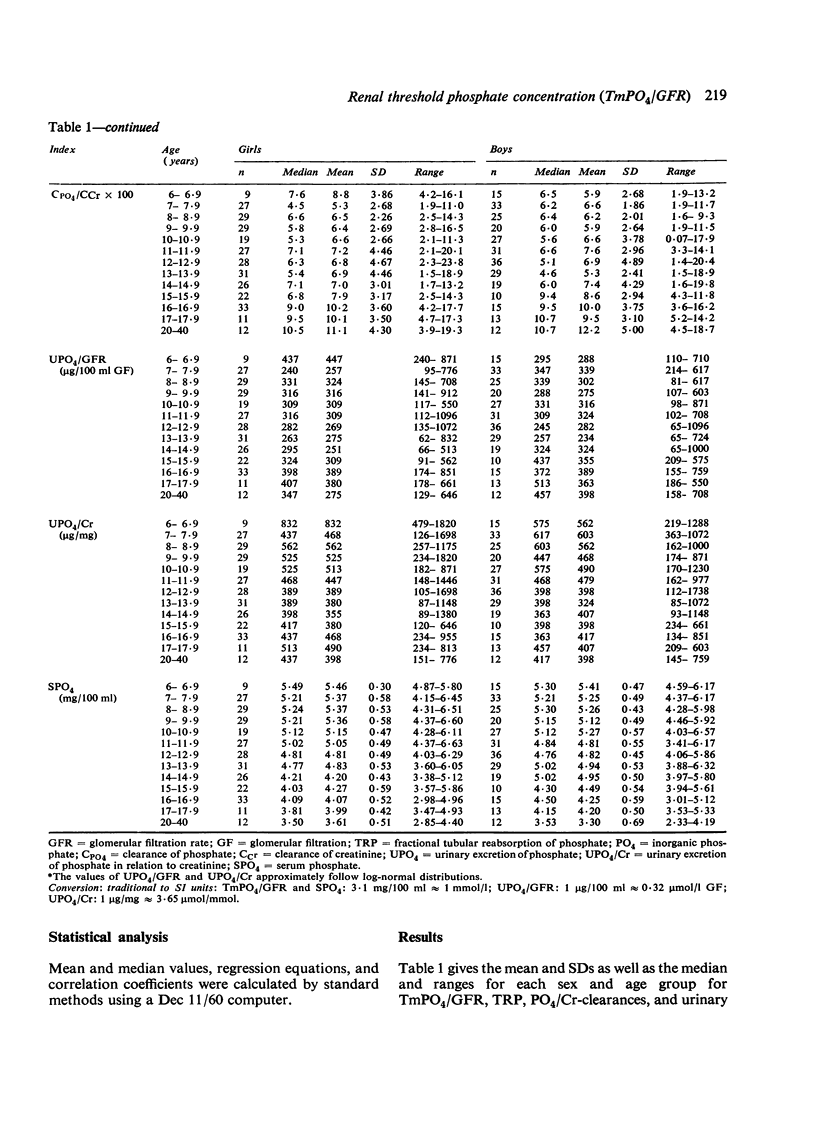
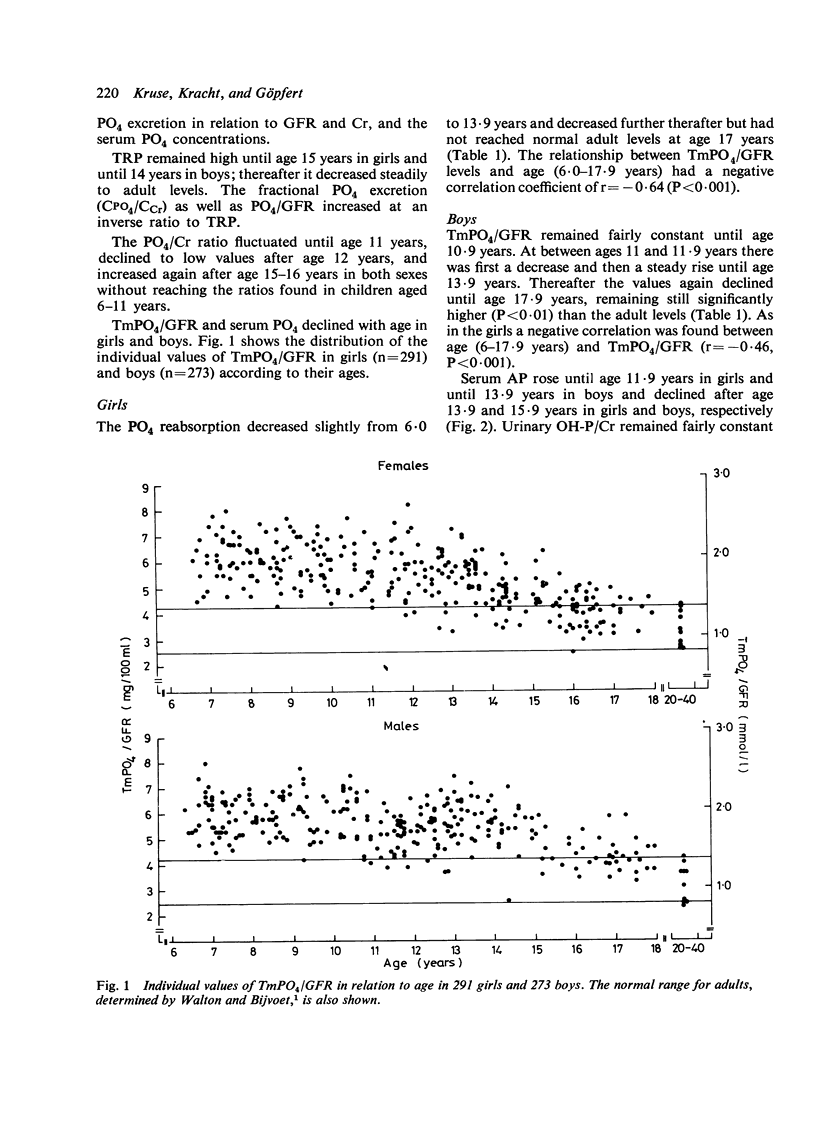
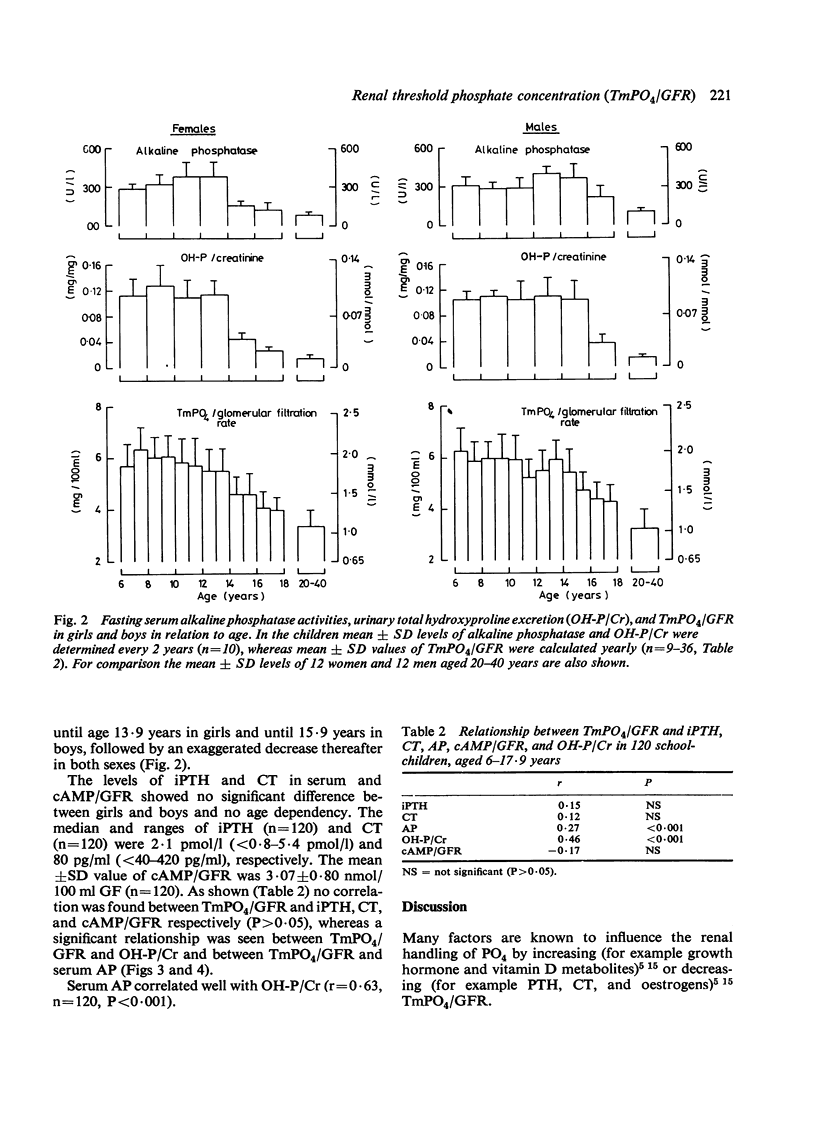
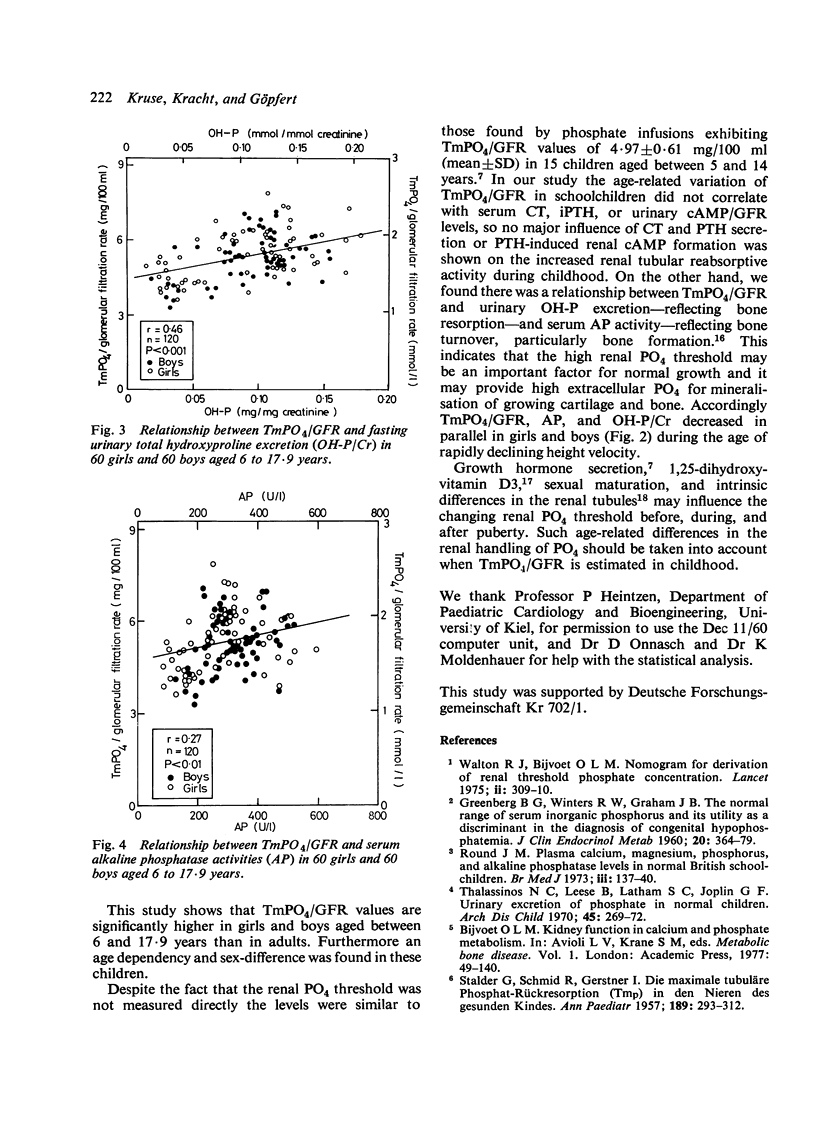
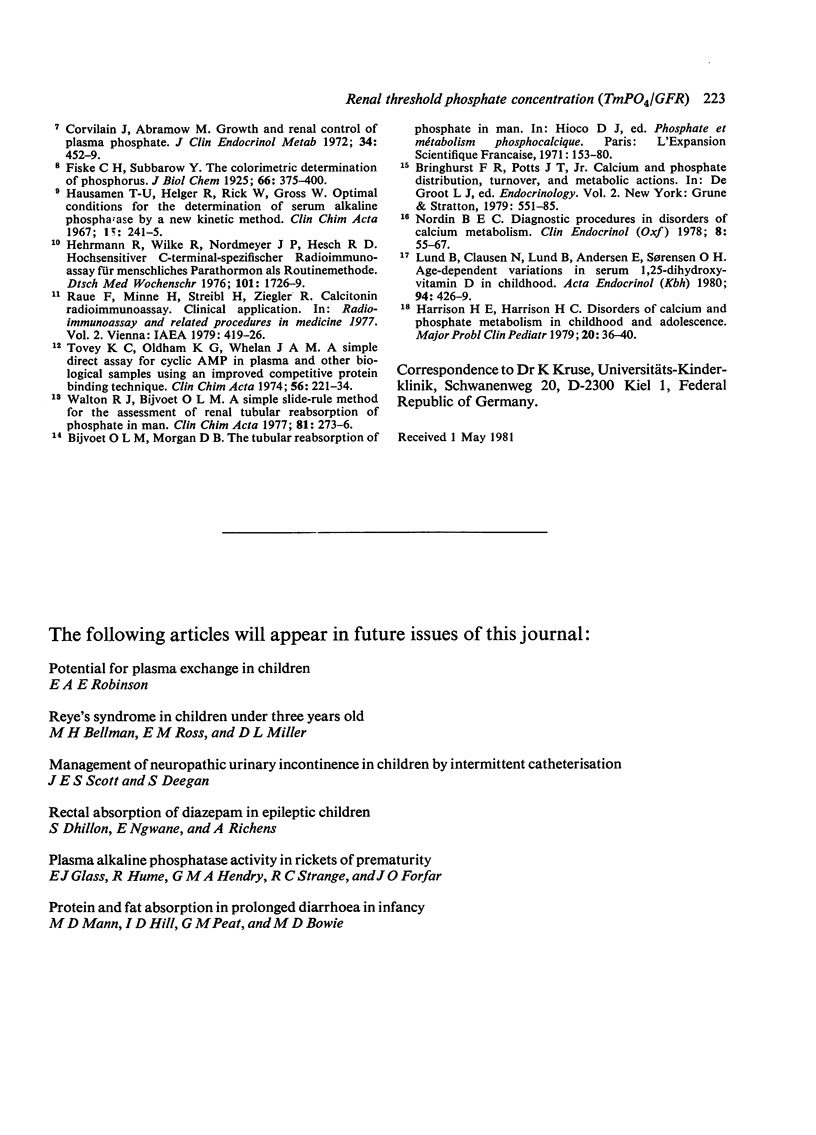
Selected References
These references are in PubMed. This may not be the complete list of references from this article.
- Corvilain J., Abramow M. Growth and renal control of plasma phosphate. J Clin Endocrinol Metab. 1972 Mar;34(3):452–459. doi: 10.1210/jcem-34-3-452. [DOI] [PubMed] [Google Scholar]
- GREENBERG B. G., WINTERS R. W., GRAHAM J. B. The normal range of serum inorganic phosphorus and its utility as a discriminant in the diagnosis of congenital hypophosphatemia. J Clin Endocrinol Metab. 1960 Mar;20:364–379. doi: 10.1210/jcem-20-3-364. [DOI] [PubMed] [Google Scholar]
- Hehrmann R., Wilke R., Nordmeyer J. P., Hesch R. D. Hochsensitiver, C-terminal-spezifischer Radioimmunoassay für menschliches Parathormon als Routinemethode. Dtsch Med Wochenschr. 1976 Nov 19;101(47):1726–1729. [PubMed] [Google Scholar]
- Lund B., Clausen N., Lund B., Andersen E., Sørensen O. H. Age-dependent variations in serum 1,25-dihydroxyvitamin D in childhood. Acta Endocrinol (Copenh) 1980 Jul;94(3):426–429. doi: 10.1530/acta.0.0940426. [DOI] [PubMed] [Google Scholar]
- Nordin B. E. Diagnostic procedures in disorders of calcium metabolism. Clin Endocrinol (Oxf) 1978 Jan;8(1):55–67. doi: 10.1111/j.1365-2265.1978.tb01350.x. [DOI] [PubMed] [Google Scholar]
- Round J. M. Plasma calcium, magnesium, phosphorus, and alkaline phosphatase levels in normal British schoolchildren. Br Med J. 1973 Jul 21;3(5872):137–140. doi: 10.1136/bmj.3.5872.137. [DOI] [PMC free article] [PubMed] [Google Scholar]
- STALDER G., SCHMID R., GERSTNER I. Die maximale tubuläre Phosphat-Ruckresorption (TmP) in den Nieren des gesunden Kindes. Ann Paediatr. 1957 Nov;189(5):293–312. [PubMed] [Google Scholar]
- Thalassinos N. C., Leese B., Latham S. C., Joplin G. F. Urinary excretion of phosphate in normal children. Arch Dis Child. 1970 Apr;45(240):269–272. doi: 10.1136/adc.45.240.269. [DOI] [PMC free article] [PubMed] [Google Scholar]
- Tovey K. C., Oldham K. G., Whelan J. A. A simple direct assay for cyclic AMP in plasma and other biological samples using an improved competitive protein binding technique. Clin Chim Acta. 1974 Nov 8;56(3):221–234. doi: 10.1016/0009-8981(74)90133-8. [DOI] [PubMed] [Google Scholar]
- Walton R. J., Bijvoet O. L. A simple slide-rule method for the assessment of renal tubular reaborption of phosphate in man. Clin Chim Acta. 1977 Dec 15;81(3):273–276. doi: 10.1016/0009-8981(77)90059-6. [DOI] [PubMed] [Google Scholar]
- Walton R. J., Bijvoet O. L. Nomogram for derivation of renal threshold phosphate concentration. Lancet. 1975 Aug 16;2(7929):309–310. doi: 10.1016/s0140-6736(75)92736-1. [DOI] [PubMed] [Google Scholar]


